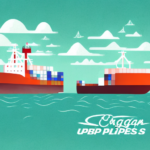The Benefits of Shipping Frozen Food with UPS
Shipping frozen food requires reliable services to manage costs and maintain product integrity throughout the journey. UPS offers a comprehensive range of shipping solutions tailored specifically for businesses dealing with frozen food. Leveraging their advanced infrastructure, UPS ensures that your products remain safe and cost-effective from origin to destination.
Understanding UPS Shipping Rates for Frozen Food
Factors Affecting Shipping Costs
- Distance: The farther the shipment travels, the higher the cost.
- Weight and Dimensions: Heavier and larger packages incur higher fees.
- Service Type: Options like ground, air, and ocean freight vary in pricing.
- Special Requirements: Temperature control and expedited services can increase costs.
Calculating Shipping Costs
To accurately estimate your shipping expenses, utilize the UPS Shipping Calculator. Input details such as package weight, dimensions, destination, and required services. For a more precise estimate, contacting a UPS representative is recommended.
Remember to account for additional costs related to insulated packaging, dry ice, or gel packs necessary for maintaining frozen conditions during transit.
Packaging and Handling Frozen Food for UPS Shipping
Proper Packaging Materials
Effective packaging is crucial to preserve the quality of frozen food. Use insulated materials like foam containers or thermal blankets to maintain the required temperature. Additionally, FDA-approved packaging ensures compliance with safety standards.
Labeling Best Practices
Accurate labeling is essential for regulatory compliance and safe handling. Include information such as the country of origin, health certificates, and handling instructions. Clear labels help prevent mishandling and ensure that your shipment is treated appropriately throughout its journey.
Insulation Requirements
Dry Ice
Dry ice is an effective insulation material that can keep your products frozen for extended periods. However, it must be handled with care to prevent accidents. Ensure proper ventilation in packaging to avoid carbon dioxide buildup.
Gel Packs
Gel packs are a safer alternative to dry ice, providing effective temperature control without the associated risks. They are reusable and can be tailored to specific temperature requirements.
Tips to Reduce UPS Shipping Rates for Frozen Food
Optimize Packaging
Using smaller and lighter packaging materials can significantly lower shipping costs. Efficient packaging reduces dimensional weight charges and optimizes space during transit.
Consolidate Shipments
Combining multiple orders into a single shipment can make you eligible for bulk discounts. This approach not only reduces costs but also minimizes the environmental impact of shipping.
Streamline Logistics
Implementing efficient logistics processes, such as automated warehouse systems and real-time inventory management, can decrease preparation time and reduce overall shipping expenses.
Selecting the Right UPS Shipping Service for Frozen Food
Ground vs. Air vs. Ocean Freight
- Ground Shipping: Ideal for domestic shipments with shorter distances.
- Air Freight: Suitable for international shipments or when faster delivery is required.
- Ocean Freight: Cost-effective for large shipments with longer transit times.
Specialized Services
UPS offers specialized services like UPS Temperature True and UPS Cold Chain, which use advanced temperature control technologies to ensure the safe delivery of frozen food products.
Best Practices for Tracking and Managing Your UPS Shipments
Tracking Tools
UPS provides robust tracking tools that allow you to monitor your shipment in real-time. Utilize the UPS Tracking Portal to stay informed about the status and location of your packages.
Monitoring Temperature
Ensure that the temperature remains consistent throughout transit by using temperature-sensitive tracking devices. These devices can alert you to any deviations, allowing you to take corrective actions promptly.
Avoiding Common Mistakes and Handling Issues
Proper Labeling
Incorrect or incomplete labels can lead to delays and increased costs. Always double-check labels for accuracy and compliance with shipping regulations.
Choosing Insulation Materials
Using the wrong insulation materials can compromise the quality of your frozen food. Select materials that are appropriate for the duration and conditions of your shipment.
Selecting Appropriate Shipping Services
Choosing the wrong type of shipping service can result in higher costs and potential delays. Assess your specific needs and select a service that aligns with your budget and delivery timelines.
Comparing UPS with Other Carriers
While UPS is a leading choice for shipping frozen food, it's beneficial to compare services with other carriers like FedEx, DHL, and USPS. Factors to consider include shipping rates, delivery times, temperature control capabilities, and customer support. Conducting a comparative analysis can help you select the most cost-effective and reliable carrier for your business needs.
Conclusion
Shipping frozen food with UPS offers numerous advantages, including reliable temperature control, a variety of shipping options, and robust tracking systems. By understanding the factors that influence shipping rates and implementing best practices for packaging and logistics, businesses can optimize their shipping processes, reduce costs, and ensure the safe delivery of their frozen products. Regularly reviewing shipping strategies and staying informed about UPS’s latest services will further enhance efficiency and customer satisfaction.




















